Works
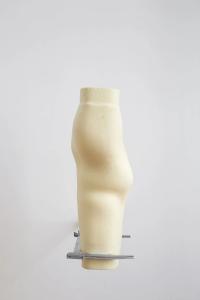
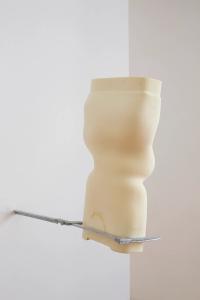
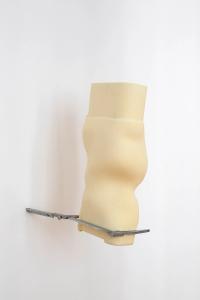
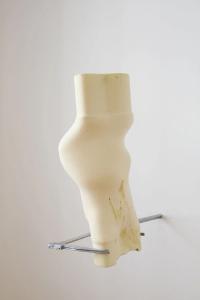
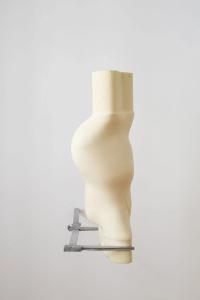

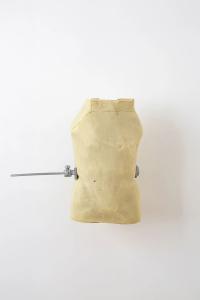
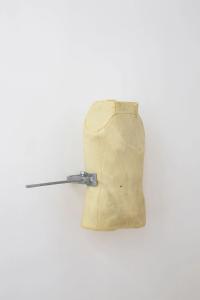
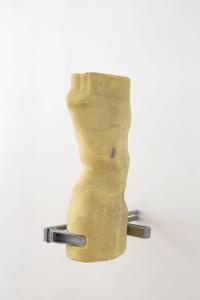


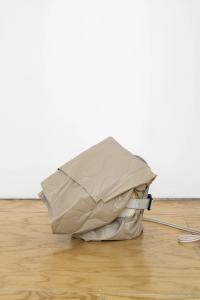
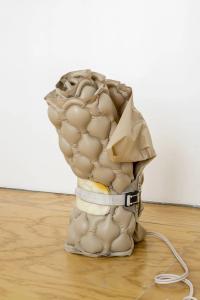
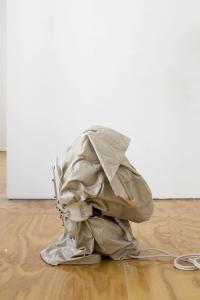

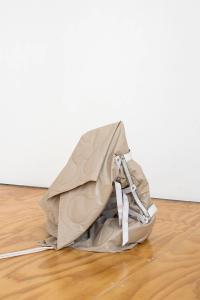
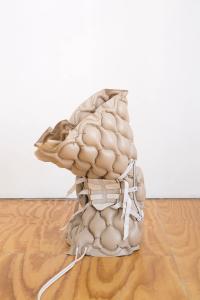
Installation Views
Press Release
BERENICE OLMEDO- Toraco-Lumbo [SKOLIÓPHYSIS] November 16, 2019 – January 11, 2020 Five ready-made torso molds are held in position and affixed to the wall like headless busts. The polyurethane molds displayed were originally produced as positives to custom fabricated medical corsages used to correct the lateral (sideways) curve of the spine in scoliosis. The ready-made objects are kept in position by casts of anthropometric calibrators that are used for orthopedic procedures to measure the degree of the physical aberration from what is considered the norm. The shapes of the torso molds are neither representations of the “deformed” nor of the “ideal” bodies. They, in fact, embody the shape of the torso in its in- between state of being sculpted – the posture that will make the body transform itself. The torso molds (héxis, 2019) are presented in company of three sculptures (áskesis, 2019) made of alternating pressure mattresses, in their middle respectively strapped with lumbar braces. Like the torso molds, the mattresses are decontextualized orthopedic devices: they originally serve for alternating pressure therapy to stimulate the blood flow of bedridden people to prevent pressure ulcers, sores, or other wounds – to keep the bodily shell intact. The mattresses’ electric pump systems produce a constant airflow in the strapped pads: when being filled with air, they erect themselves, as if aspiring verticality, when deflating they slump down and lose their posture. This aspired verticality is a recurring motif in the exhibition. Not only are the strapped mattresses seeking the equilibrated, upright posture. Also the ready-made torso molds were meant to sculpt the human posture in that same manner to achieve the “ideal” verticality. In both bodies of works, Olmedo puts at the center of attention orthopedic devices whose intrinsic purpose is the support of the human body to modify itself: to maintain a position in order to correct a diagnosed deformation or to sustain the bodies own biological functionalities.Thus, these orthopedic procedures indicate that something needs to be transformed. This, in turn, implies a presumed norm or standard that is intended to be attained. But what is that norm? And how is it constructed? Berenice Olmedo’s work draws from philosophical thinking that there is not one natural physical (human) constitution; on the contrary, it is essentially diverse. The work raises questions concerning the social construction and repressive authority of such normative structures that serve as universal references for understanding. Therefore, not only bodies, but also ways of thinking and categorizing are shaped by the imposition of such culturally evolved categories that, in consequence, result in hierarchies in societies.
Anna Goetz
















